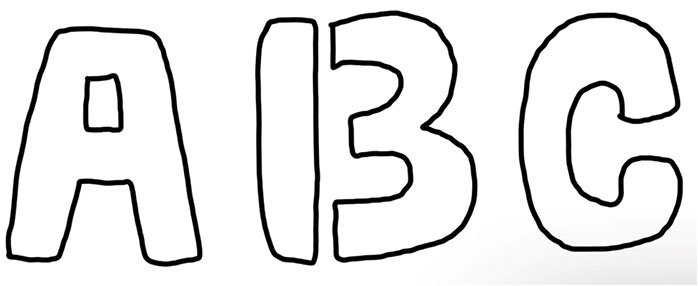Home / Courses / Visual Perception for Communication Designers / 2. Nature of Visual Experience / 2.2 The Perceptual Process
Design Course
Visual Perception for Communication Designers
Human Factors and Sociotechnical Systems Studios
by
The perceptual process, deriving from the information processing metaphor, is a sequence of steps that lead from the stimulus in the environment to an individual's action in response to a stimulus (e.g. masala-cola). This perceptual process is divided into four categories: Stimulus, Electricity, Experience & Action, and Knowledge. Stimulus is what we pay attention to and what is in our surroundings. The stimulus stimulates our receptors, sending an electrical signal to the brain (electricity). This electrical signal is then perceived, recognized, and reacted to (Experience and Action).
Figure 2.2.aSource: Sruthi Sridhar. Recreated from Goldstein, 2010
Environmental stimulus is everything in the outside world that we can potentially perceive. This can refer to the multiple sensations, such as sipping the masala-cola, in our earlier example or even in other everyday circumstances. For example, if we are stuck in traffic, there are multiple stimuli one can perceive. It can be other vehicles on the road, the road itself, hoardings on the roadside, street signs etc. However, it is impossible to focus on everything at once. Therefore, when stuck in traffic, if we decide to look at a bright advertisement, the hoarding will have all our attention, thus becoming the attended stimulus. However, once the traffic starts moving, the cars in the surrounding might become the attended stimulus due to the shift in attention — the attended stimulus changes as our attention shifts from place to place.
When we start focusing on the advertisement, we start looking at it directly, which creates an image of the ad and its surrounding on the receptors of our retina. This is a crucial step as the ad's image (stimulus) is transformed into another form - light impulses on our retina.
The next step in the perceptual process is transforming these light impulses into electricity. Converting the light stimulus (font of the advertisement) into an electrical stimulus is known as transduction. Next, following the font's image transformation into electrical impulses in our receptors, these signals stimulate neurons, activating additional neurons. These signals eventually leave the eye and are transmitted to the brain. The transmission step is critical as no perception occurs if the impulses do not reach the brain. These electrical signals are then processed through a network of neurons in our brains, leading to our perception of the image.
This setup can be likened to a communication system. The image below compares the neurological system and cell phone signal transmission.
Figure 2.2.b
Source: Sruthi Sridhar. Recreated from Goldstein, 2010
The image on top shows the transmission of an electrical signal meaning “hello” between two cell phones. The signal received by the cell phone is identical to the signal sent. Cell phones are designed to send a replica of the original signal. However, there are distinctions between information transmission between cell phones and information transmission in the nervous system. The nervous system (eye) sends electrical signals representing the letter "x” to the brain. Because the nervous system processes these electrical signals, the signal responsible for letter perception differs from the initial signal provided by the eye. The information that reaches the brain is changed in the nervous system so that, while it represents the original stimulus, it is usually considered different from the original signal.
The third stage of the perceptual process is where the information is processed into things, and we become "aware." This entails perceiving or recognizing an object or acting on the object in the environment. As mentioned before, perception is the conscious experience of sensations. Recognition is the ability to provide meaning to an object by categorizing it, such as the "letter x." Finally, the action includes motor actions such as moving the head or eyes or locomotion through the surroundings. For example, in the case of advertisement, moving our eyes and head to read the subsequent letters to know what comes next.
In addition, past knowledge plays a role in our everyday understanding. Because knowledge can influence several steps in the perceptual process, it is positioned above the circle. Information that a person brings to a situation can include items learned years ago, such as learning the alphabet as a child or knowledge gained through recent occurrences can all impact perceptual processes.
The difference between bottom-up and top-down processing can better explain the role of previous knowledge in the perceptual process. Bottom-up processing is processing information based on incoming data. Bottom-up processing is data-driven, where the incoming data becomes the starting point and takes place in real time. In the example of the masala cola, you would look at the color (dark), fizziness, presence of masala, and smell and taste of the drink to recognize it as a tasty masala cola.
In contrast to the above, top-down processing refers to processing based on previous knowledge, where the information coming in is interpreted using contextual clues with the help of prior experience and expectations. For example, in our earlier case of cola, the shape and colors of our logo from our past experiences in various advertisements help us recall the brand. Designers often emphasize brand recall in the branding of various products.
Let us take another example; let's look at the picture below. One might identify the middle symbol as a "13" by implementing bottom-up processing. It would work as you have previously learnt what a "13" is and what it looks like when typed on a paper. Therefore, if no context is provided, one would recognize the markings as the numerical "13" after sending the stimuli to your visual context and analyzing the stimuli.

Figure 2.2.c
Source: Sruthi Sridhar
The outcome of top-down processing might be different. Say there were two markings between an "A" and a "C." You will interpret it as "B" when you see the two markings. Based on your understanding of the other information provided, you assume the marking is an alphabet instead of a numerical one. But due to top-down processing, your original interpretation of the markings differed from the numerical "13."
 Figure 2.2.d
Figure 2.2.d
Source: Sruthi Sridhar
- 1. Introduction
- 2. Nature of Visual Experience
- 3. Figure-ground Segregation
- 4. Edges, Lines and Angles
- 5. Color and Lightness
- 6. Illusory Motion
- 7. Size and Distance
- 8. Depth and Perspective
- 9. Perception, Attention and Change
- 10. Conclusion
- 11. Appendix
- 12. References
- Downloads
- Contact Details
- Credits



